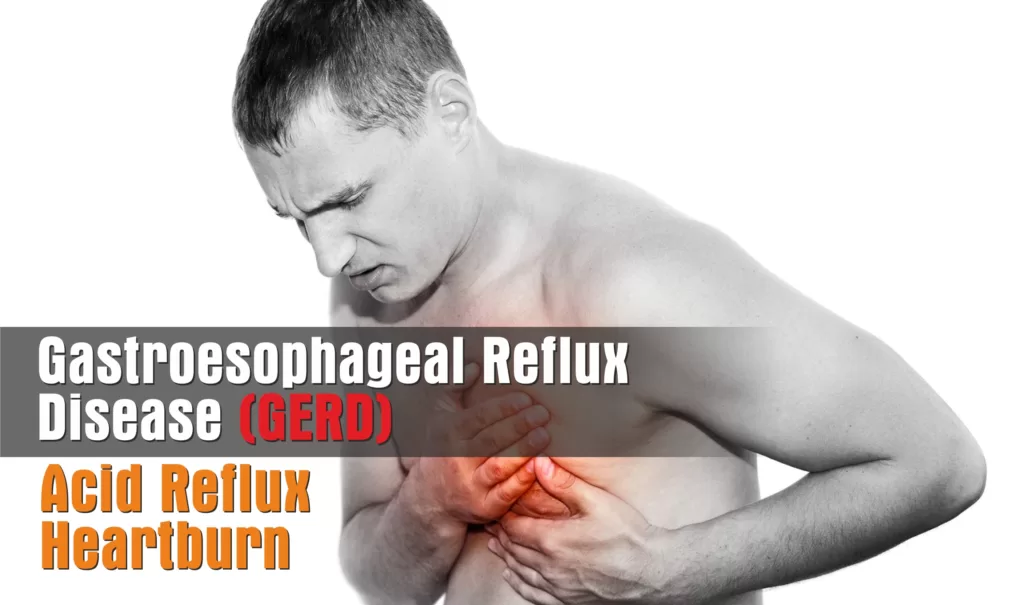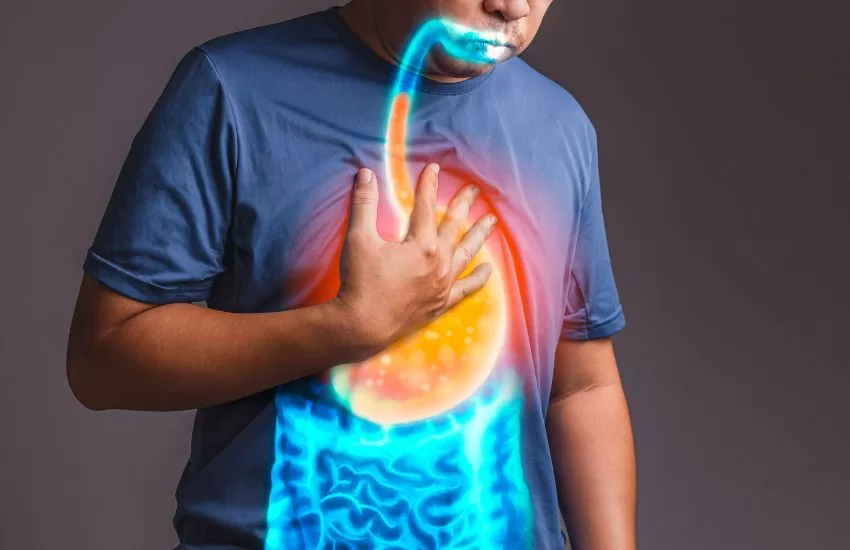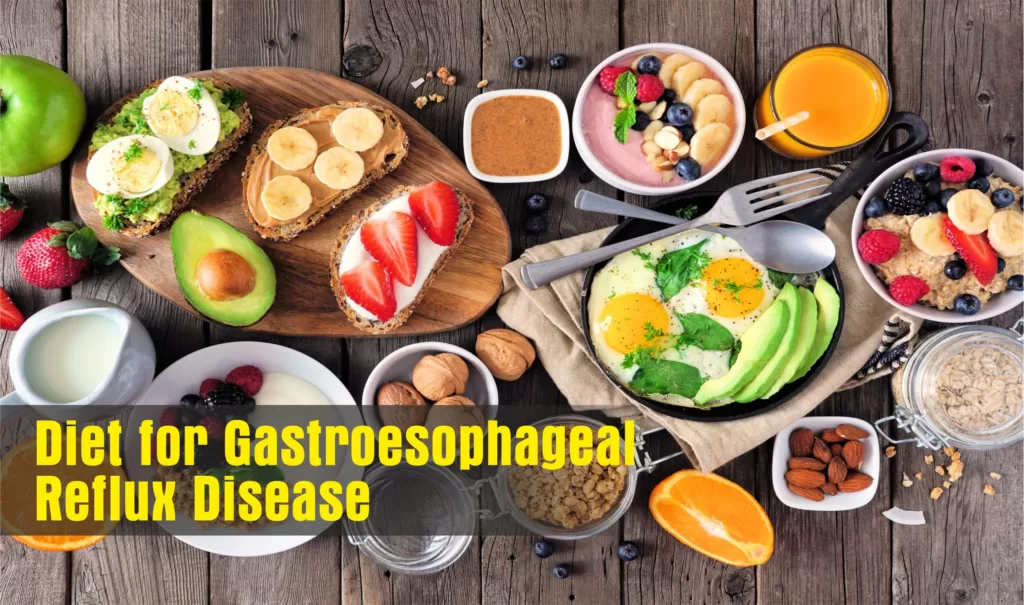- Acid reflux, also known as gastroesophageal reflux disease (GERD), is a common digestive disorder that affects millions of people worldwide.
Acid reflux is a common digestive condition characterized by burning and pain in the lower chest area, also known as heartburn. It occurs when acid from the stomach comes back up through the esophagus into the throat, causing a burning sensation in the stomach and throat, also known as gastroesophageal reflux (GERD). Along with adults, children and infants can have this digestive disorder.

What is Acid Reflux ?, Combating Acid Reflux
Hydrochloric acid in the stomach helps to digest food and destroy harmful bacteria, also known as digestive juices. The lower esophageal sphincter (LES) is a one-way valve in the esophagus that opens when food is swallowed.

When the esophageal sphincter (LES) doesn’t close properly, digestive juices and stomach contents back up into the esophagus through the esophagus, causing acid to back up into your esophagus. This problem is called acid reflux.
What is Gastroesophageal Reflux Disease (GERD)?
Gastroesophageal reflux disease is a digestive disorder in which stomach acid or stomach contents flow back into the esophagus. Due to this, the inner surface of the food pipe starts burning. Many people have this problem from time to time. Gastroesophageal Reflux disease (GERD) is a problem ranging from children to adults.
The lower esophageal sphincter allows food to enter the stomach during digestion while preventing food and acid from backing up into the oesophagus. Gastroesophageal reflux disease (GERD) often occurs when the lower esophageal sphincter is weak and allows stomach contents to flow back up into the esophagus.
Pregnant women have to face the problem of heartburn and acid indigestion due to gastroesophageal reflux disease (GERD). Doctors believe that many people suffer from gastroesophageal reflux disease (GERD) due to Hiatal Hernia.
How much you know about your child’s obesity?
Symptoms for Gastroesophageal Reflux Disease

Symptoms of gastroesophageal reflux include the following:
- Pain in chest
- Heartburn, sometimes you can feel this burning sensation in your throat as well.
- Sour taste in mouth
- Dry cough
- Swollen gums
- Cavities
- Bad breath
- swallowing challenges or a lump in the throat
- Hoarseness
- Chronic sore throat
- Food is coming back into mouth
Other symptoms of this heartburn disease include –
- Persistent dry cough
- wheezing
- Asthma and recurrent pneumonia
- nausea
- belching or hiccups
- Vomit
- throat problems, such as pain or laryngitis (inflammation of the voice box),
- difficulty or pain in swallowing
- Pain in the chest or upper abdomen
- Tooth decay
- Bad breath, etc.
Causes for Acid Reflux Disease
This digestive disorder is caused by an abnormality of the stomach, the main cause of which can be a hiatal hernia. It occurs when acid or food from the stomach and the esophageal sphincter (LES) come up through the diaphragm, which separates the stomach and chest.
The diaphragm helps to store the acid in our stomach. But if you have a hiatal hernia, then the acid comes up towards the esophagus, causing this digestive disorder.
The following are the main causes of this digestive disorder –
- Eating large amounts of food and lying down immediately after a meal can lead to this digestive disorder.
- Excess obesity and weight are also causes of this digestive disorder.
- Consumption of beverages like smoking, alcohol, carbonated drinks, coffee, or tea can also cause this digestive disorder.
- Eating tomatoes, chocolate, garlic, onions, or spicy or fatty foods can also trigger this digestive disorder.
How to keep your brain always young? Must Know.
Diagnosis
Diagnosis of GERD or heartburn Problem
It is a common problem which is easy to diagnose, however, a patient suffering from this disease may also have complaints of other diseases such as: –
- Pneumonia
- Heart Attack
- Pain in chest
- Pulmonary embolus
In case of severe symptoms, the doctor may order the following tests to confirm the diagnosis;-
- Endoscopy – Imaging by camera,
- Biopsy – taking a tissue sample for laboratory analysis,
- Barium X-ray – taking a picture of the esophagus, stomach, and upper duodenum by feeding a chalky liquid.
- PH Monitoring – Checking the acid in the esophagus by doing an acidity test.
How is Gastroesophageal Reflux Disease Diagnosed?
Your doctor may recommend the following tests after observing the symptoms:
1. X-Ray of Upper Digestive System
For the X-ray, you are given a liquid drink that fills the lining of your digestive system. This helps your doctor see the esophagus, stomach, and upper intestine.
2. Endoscopy
This involves examining the inside of the esophagus, in which the doctor will insert a thin, flexible tube with a light and camera attached down your throat to examine the esophagus and stomach. Test results can often be normal if stomach acid is present but endoscopy can detect inflammation and complications in the esophagus.
3. Ambulatory Acid Test
In this test, a monitor is placed in the esophagus to find out when and for how long the stomach makes and digests acid. You wear a little computer around your waist that is connected to this monitor. The monitor may be a thin, flexible tube that is passed through your nose into your esophagus. In this, the amount of acid in the esophagus is checked.
4. Esophageal Impedance Test
This test measures the movement of substances inside the esophagus.
Gastroesophageal Reflux Disease Treatment
Your doctor may suggest some changes to your eating habits to help relieve the symptoms of gastroesophageal reflux. Along with this, some of the following over the counter medicines can also be recommended to you:
- Antacids
- H2 receptor blockers
- Proton Pump Inhibitors [PPI]
If the condition of gastroesophageal reflux is severe and there is no effect from these medicines, then the doctor can also recommend you high dose medicines but it also has side effects. Medicines given for gastroesophageal reflux disease (GERD) cause constipation. Due to the side effects of the medicines, the stool becomes hard and the bowel movement also slows down.
In most cases, the symptoms of gastroesophageal reflux can be relieved with medications and lifestyle changes, but sometimes surgery is needed. If it is not treated on time, your digestive system may swell due to the following reasons:
1. Narrowing of the Esophagus
The acid produced in the stomach can lead to scar tissue in the lower esophagus. This can narrow the food pipe, which makes it difficult to swallow food.
2. Esophageal Ulcer
The acid present in the stomach can keep the tissue away from the esophagus, which can lead to a sore throat. Bleeding can occur from esophageal ulcers. It can also be painful due to which there can be difficulty in swallowing.
3. Barrett’s Esophagus
Damage from acid can cause tissue changes in the lower esophagus. Esophageal cancer risk is increased by these alterations.
Diet and Nutrition for Gastroesophageal Reflux Disease

1. Vegetables
Green beans, broccoli, asparagus, cauliflower, potatoes, and cucumbers are good choices to include in your diet to avoid.
2. Ginger
Ginger is a natural remedy for heartburn and other gastrointestinal problems. Ginger tea is beneficial in reducing the symptoms of this digestive disorder.
3. Oatmeal
Oatmeal can reduce the symptoms of acid reflux by absorbing the acid in the stomach.
4. Noncitrus Fruits
Noncitrus fruits, including watermelon, bananas, apples, and pears, work to prevent acid reflux symptoms from getting worse.
5. Lean Meats
Consuming lean meats such as low-fat chicken, turkey, fish, and seafood is beneficial in reducing this digestive disorder symptoms.
Along with this, the consumption of egg whites also proves beneficial in this digestive disorder.
Food to Avoid
This digestive disorder can also be caused by eating certain foods, such as
1. High-Fat Foods
The above-mentioned foods jam the LES so that excess amount of acid comes back into the esophagus, and these foods deactivate the digestive process.
The following types of foods are high in fat, such as full-fat dairy products such as butter, milk, cheese, and sour cream, pork, sweets or potato creamers such as ice cream and potato chips, cream sauces, and Cream, salad, etc.
2. Citrus Fruits and Tomatoes
Fruits and vegetables are beneficial for health, but their excessive consumption has a bad effect on health. Excess consumption of citrus fruits and tomatoes can cause this digestive disorder
3. Chocolate
Chocolate contains a component called methylxanthine which helps in affecting the LES and increasing acid reflux.
4. Garlic, Onions, and Spicy Foods
Such foods and foods are helpful in increasing the symptoms of heartburn, but are less liable to this digestive disorder.
Apart from this, there are other food items also which are responsible for this digestive disorder like smoking, peppermint, alcohol, carbonated drinks, certain beverages like coffee, or tea etc.
Disclaimer : The article’s sole purpose is to wake you up for your health and to provide you the best collective and verified information. We do not recommend for any kind of medicine or treatment. You should only seek to your Doctor or Medical Counselor Because there is no one better than him.
1 thought on “Acid Reflux: Symptoms, Treatment & 5 Diet Suggestions”